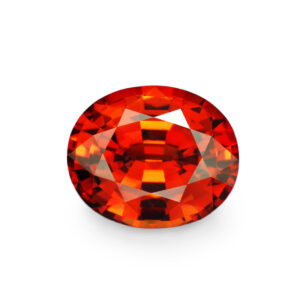By Jennifer Heebner, Editor in Chief
Sales at some of the recently held trade fairs in Asia were a lot different from those in fall 2023. Exhibitors and guests to the International Jewellery Tokyo in mid-January, the Bangkok Gems & Jewelry Fair in late February, and the Hong Kong Jewellery & Gem Fair and Hong Kong International Jewellery Show in late February and early March witnessed emptier aisles and lighter sales (if any). Problems stem in part from real estate issues in China that have trickled down to consumers.
As in many countries, real estate has “long been important for China’s economy,” according to the International Monetary Fund (IMF). A property boom in China is now screeching to a halt, with developers drowning in debt and a glut of empty properties spanning across many major cities. Plus, prices of secondhand homes have dropped, thereby affecting consumers. These occurrences mean that some banks are reluctant to lend, and the savings of many in China are adversely affected—hardly a good time to buy luxury goods.

Daniel Assaf of The Tsavorite Factory exhibited in Tokyo and at the Hong Kong Jewellery & Gem Fair, but neither show was a boon.
“Buyers were asking prices but weren’t really making offers,” he says. “There’s a bit of a downturn in Asia, so sales have slowed. The Hong Kong show relies heavily on the Chinese market.”
But it’s not just a down Chinese real estate market that’s affecting sales. Under terms of the “Anti-Money Laundering and Counter-Terrorist Financing Ordinance,” precious metals and gemstone dealers operating in Hong Kong must register with the Commissioner of Customs and Excise and report any transactions with a value equal to or exceeding HK$120,000. This rule went into effect on Jan. 1, 2024.
Additionally, enforcement of the “Cross-boundary Movement of Physical Currency and Bearer Negotiable Instruments Ordinance” means that “any person arriving in Hong Kong … in possession of a large quantity of currency … a total value more than HKD120,000 …” must declare it to Customs. This made buyers skittish.
As a result, Tracy Lindwall of Gems by Nomads, which exhibited at the Hong Kong Jewellery & Gem Fair, noticed fewer cash payments. “We were happy to take credit cards,” she says.
For her, the first day of the show was the worst. “It was so slow that it was nerve-wracking, but it picked up.”

Shekhar Shah of Real Gems, which also exhibited at the Hong Kong Jewellery & Gem Fair, notes that regulations could be hurting business. “There were finance officials walking around the show monitoring sales,” he says.
Shah was disappointed with his Hong Kong sales. Traffic was down, some important buyers didn’t show, and nobody wanted to pay what he calls “stupid” prices on some goods now.
“Business wasn’t there to justify buyers coming,” he says.
Plus, some buyers realize that they don’t need to go to shows because exhibitors will visit them. Shah agrees this is possible. “It could be more cost-effective to take three trips to Asia versus exhibiting at a show if it generates the same amount,” he says.
Both Afshin and David Hackman of Intercolor traveled abroad to buy. Afshin went to Bangkok while his brother went to the Hong Kong Jewellery & Gem Fair. According to their conversations with exhibitors, traffic was slow at both.
“Attendance by mainland Chinese buyers was way down,” says Afshin. “And those who did attend were resistant to prices.”
Sapphire and Ruby prices remain sky high—as much as 50% higher in some cases than at past fairs.
Jewelry designer Erica Courtney attended the Bangkok show to buy and was shocked at prices of gems long considered “semiprecious” like Tourmaline.
“Just because it’s rubellite doesn’t mean it’s not expensive,” she quips. “Some of it cost more than Sapphires.”

Lindwall’s clients, meanwhile, grudgingly accepted the new normal costs.
“Prices have been going up, so they are used to it by now,” she adds. “I don’t think they’re happy about it, but they understand that’s where the market is now.”
This is proprietary content for AGTA and may not be reproduced.
